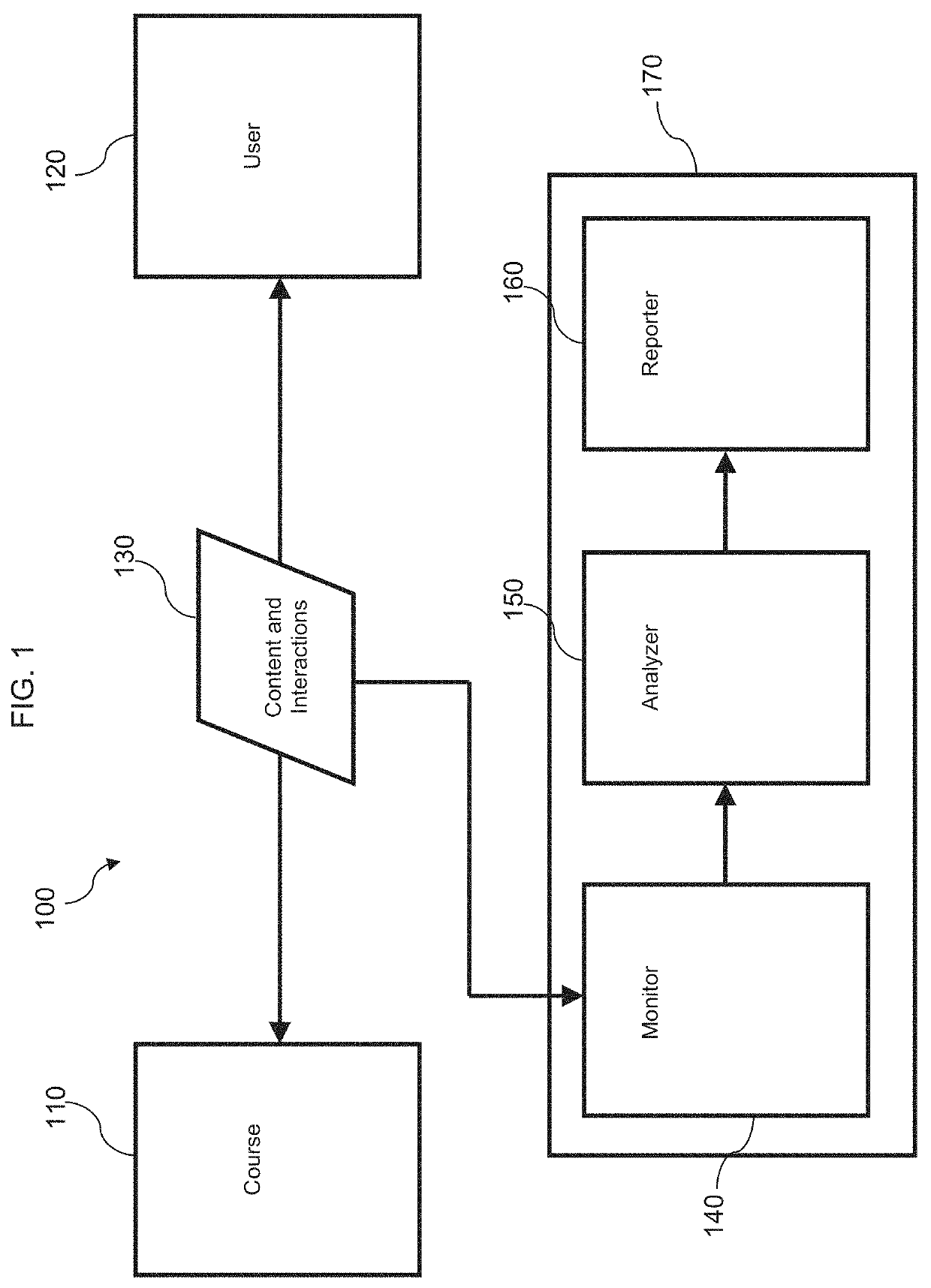Learner interaction monitoring system
a monitoring system and learner technology, applied in educational appliances, mechanical appliances, instruments, etc., can solve the problems of significant problems in evaluating the true impact of [online] training, few easily implementable approaches, etc., and achieve the effect of greater intelligence, responsiveness and reactivity
- Summary
- Abstract
- Description
- Claims
- Application Information
AI Technical Summary
Benefits of technology
Problems solved by technology
Method used
Image
Examples
Embodiment Construction
[0094]FIG. 1 is a block diagram of an example system 100 illustrating aspects of the invention. System 100 is directed to presenting an interactive course of study to a user and analyzing the user's behavior with respect to the course of study using captured events. User interface 120 can communicate with an interactive learning application 110 by receiving and transmitting course content and interaction data 130. For example, the application 110 can present content to user interface 120, and the user can interact with the content using the user interface 120. The user's interactions are transmitted back to the application 110. System 100 may be implemented using various combinations of computer hardware and software as well as various computer communications networks as is known in the art.
[0095]Content and interactions 130 are also acquired by Learner Interaction Monitoring System (LIMS) 170. LIMS 170 includes a monitoring function 140, an analyzing function 150, and a reporting f...
PUM
 Login to View More
Login to View More Abstract
Description
Claims
Application Information
 Login to View More
Login to View More - R&D
- Intellectual Property
- Life Sciences
- Materials
- Tech Scout
- Unparalleled Data Quality
- Higher Quality Content
- 60% Fewer Hallucinations
Browse by: Latest US Patents, China's latest patents, Technical Efficacy Thesaurus, Application Domain, Technology Topic, Popular Technical Reports.
© 2025 PatSnap. All rights reserved.Legal|Privacy policy|Modern Slavery Act Transparency Statement|Sitemap|About US| Contact US: help@patsnap.com



